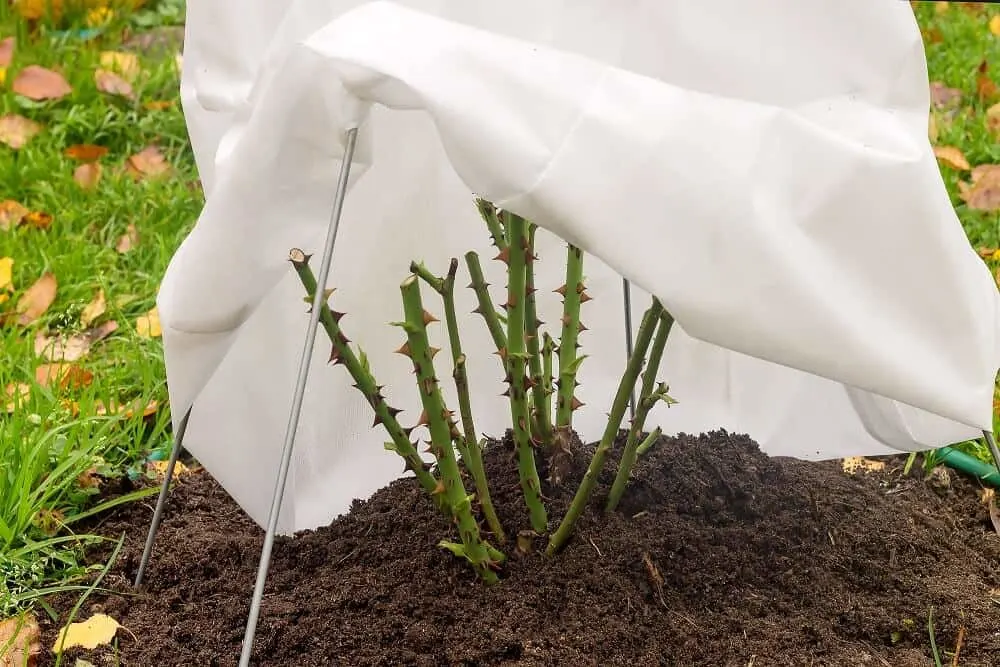Many plants can withstand minor drops in temperature, but your plants are at a higher risk for damage when frost arrives. When you protect plants from frost damage, you can avoid the frustration of losing them and the need to replace plants that were damaged.
When temperatures are low enough to form frost, the ice that builds on leaves and foliage of plants chills them and freezes fluids inside the plant cells.
When the fluids freeze, they expand and rupture the cell membranes, which kills those cells. The leaves then turn brown or black and soften and are unable to recover.
Fortunately, there are several tools and techniques you can use to protect plants from frost this winter. Using a combination of the following is often best for providing thorough protection.
How to Protect Plants From Frost This Winter
Plant Covers
Covering your plants is the most common method of frost protection.
Covers should be breathable and can be anything, including bed sheets, blankets, drop cloths, or burlap sacks.
The covers must be weighted or staked to the ground, so there are no gaps. Heat rising from the ground is trapped under the cover, keeping the plant warmer and minimizing frost.
Make sure to use stakes or spacers so that the cover does not crush the foliage. Covers should be removed in the morning as the temperature warms so that plants can breathe and recover.
Add Mulch
A layer of dark mulch can also help protect plants from frost this winter.
The mulch helps keep warmth in the soil, and the dark color improves the mulch’s ability to absorb solar radiation
The radiation is then released upward around the plant when the temperatures cool at night. Wood chips, straw, pine needles, and fallen leaves can be used to help minimize frost damage.
Related Article: 3 Lawn Care Goals For the New Year
Plant Clusters
Container plants can be clustered together to survive cold snaps and reduce the risk of frost damage.
The humidity released from the plants’ leaves helps keep them frost-free. If a hard frost is arriving, container plants should be moved to a sheltered area or inside a garage or shed.
A cover can then be wrapped around the pots or the group of plants for extra protection.
Heat Lamps
A 100-watt bulb can be used to protect plants from frost this winter, especially when used under a cover. However, make sure the lamp does not touch the plants because it could cause burns to the foliage.
Select Hardy Plants
Choosing hardy plants for your landscape is ultimately the best frost protection.
Select plants that are well suited to your climate zone and native varieties adapted to local conditions. Make sure your plants are healthy before planting, so they can better resist any local temperature extremes.
When identifying potential plants for your landscape, refer to the climate zone map published by the USDA to verify if they will tolerate the temperatures in your area.
Anti-Desiccant Applications
Desiccation occurs frequently over the winter, especially with evergreens.
Persistent winds, lower humidity levels, low soil moisture levels and frozen soil often contribute to evergreen damage from desiccation.
Spraying evergreens with an anti-desiccant can help plants manage moisture levels on their own to stay healthier and able to withstand any possible damage from frost.
Green Grounds Landscaping Is Your Go-To Source In Landscape Healthcare
Green Grounds Landscaping, located in Saint Louis Park, MN, is a Lawn Care company that is a huge part of the community.
We are a full service, licensed and insured, landscape company providing excellent lawn care and landscape service for residential & commercial properties in Minnetonka, Eden Prairie, Edina, Delano, St. Louis park, Minneapolis, St. Paul State of Minnesota licensed and certified for applications of pesticides and fertilizers.
For more information, contact us online, or call us at 612-408-4796.









